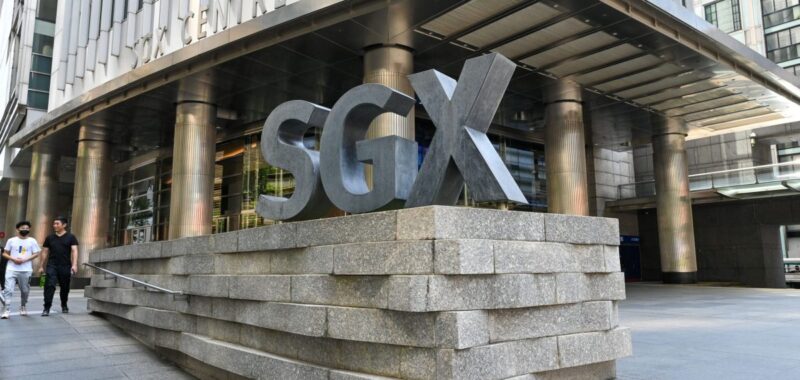
In 2022, PropertyGuru, Southeast Asia’s leading property technology company, made its public debut on the New York Stock Exchange through a merger with a SPAC, amid high expectations.
Fast forward to early 2024. The company’s shares had lost about 60% of their value at one point, prompting a buyout by private equity firm EQT at a valuation of $1.1 billion—below the $1.6 billion valuation when the startup listed just two years ago.
PropertyGuru exemplifies the formidable challenges that Southeast Asia’s unicorns face when they step into the global financial markets. International investors don’t always appreciate local success, but Southeast Asian companies lack viable alternatives closer to home.
As global markets turn increasingly inward, emerging markets like Southeast Asia risk being left behind in the funding race. Southeast Asia’s innovation ecosystem could stagnate if it can’t get sufficient liquidity flowing into the region.
Why are Southeast Asian startups listing in the U.S.?
The U.S.’s deep pools of capital are attractive to Southeast Asian companies hoping to go public. But the truth is that many U.S.-listed Southeast Asian companies struggle to gain traction post-IPO.
Southeast Asian companies on the Nasdaq have had a dismal performance, with a median price decline of 80%. That makes it impossible to raise new capital, given depressed valuations and loss of investor interest.
Despite its strong market presence in Southeast Asia, PropertyGuru struggled to leverage the extensive capital opportunities promised by the U.S. market. Why would foreign small cap stocks gain traction among U.S. investors, who can pick among many larger and familiar names?
Southeast Asia’s dependence on U.S. exchanges is a symptom of a deeper problem in the region’s capital markets: Low trading volumes.
The aggregate average daily trading volume of the six major Southeast Asian exchanges—Singapore, Indonesia, Malaysia, Philippines, Thailand, and Vietnam—is just $5 billion, compared to $200 billion traded on the Nasdaq and the New York Stock Exchange.
Different exchanges also have different listing rules, making it challenging for Southeast Asian companies to tap the various domestic pools of capital.
How can Southeast Asia’s exchanges be fixed?
Southeast Asia needs a truly regional market, where companies can raise funds from various domestic pools of capital, and investors in one country can easily trade in securities listed in another country.
Last year’s initiative by the Stock Exchange of Thailand and Singapore Exchange to allow investors to access securities traded in either exchange via a depository receipt is a good start.
But more can be done.
Southeast Asia has one of the world’s highest savings rates. This capital should be channeled to building robust regional—and not just domestic—pools of capital invested in companies listed in Southeast Asia. Regionally-focused assets, managed by those who understand Southeast Asia, will make the region’s public markets more vibrant.
How the capital is deployed is important too. Passive capital allocation or indexation won’t unlock value for small but growing companies. Instead, capital should be allocated to active asset managers with a clear mandate to invest in Southeast Asia. These asset managers are best placed to identify emerging opportunities, and invest the time and energy to understand the companies’ prospects.
There are positive examples outside the U.S. India’s stock markets, with $470 billion in domestic AUM, report a daily trading volume of about $16.5 billion, more than three times the six major Southeast Asian exchanges combined.
India encourages individuals to regularly invest small parts of their paychecks into mutually funds through Systematic Investment Plans (SIP). This directs domestic savings into the stock market and gives companies the capital they need to grow. According to AMFI data, SIPs’ share in mutual fund inflows has surged from around $100 million in February 2021 to a record $235 million in December 2023.
Another example is the Nasdaq Stockholm in Sweden, now the envy of Europe thanks to consistent investment from retail investors and Swedish pension funds. Over the past decade, the main index has surged by 85%, outperforming the Euro Stoxx 600 index’s 49% increase and London’s FTSE 100’s modest gain of 17%, according to the Financial Times.
The lesson from India and Sweden is simple: liquidity begets liquidity. Regional investment will in turn attract global flows in Southeast Asia, building a more robust funding escalator.
Regulators can help in other ways too. They could offer differentiated tax rates for Southeast Asian companies to go public, minimal friction for investors that want to invest in the region, and easier access to research on Southeast Asian companies.
Southeast Asia’s potential for growth an innovation is undeniable. Yet the region struggles to ensure that there’s enough homegrown capital to sustain this momentum.
Retail investors should not have to look to the U.S. markets to invest in the best Southeast Asian unicorns.
By harnessing regional savings, Southeast Asia can create more self-reliant and resilient funding environment for its future unicorns. Empowering the region’s startups and innovative companies is a necessity to secure Southeast Asia’s place in the global economy.
The opinions expressed in Fortune.com commentary pieces are solely the views of their authors and do not necessarily reflect the opinions and beliefs of Fortune.

